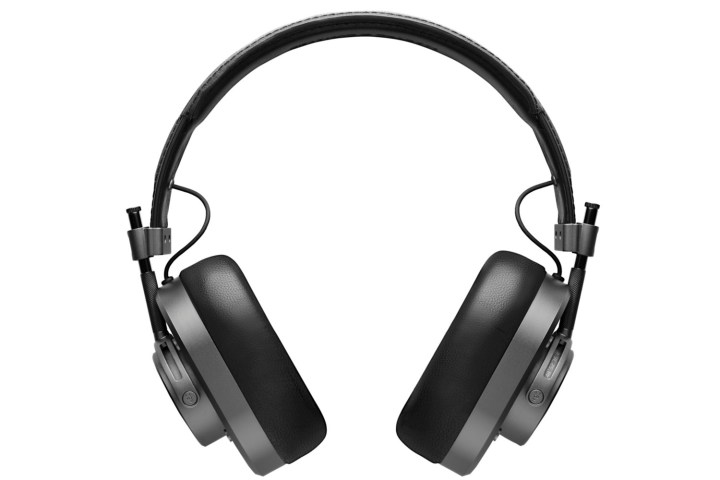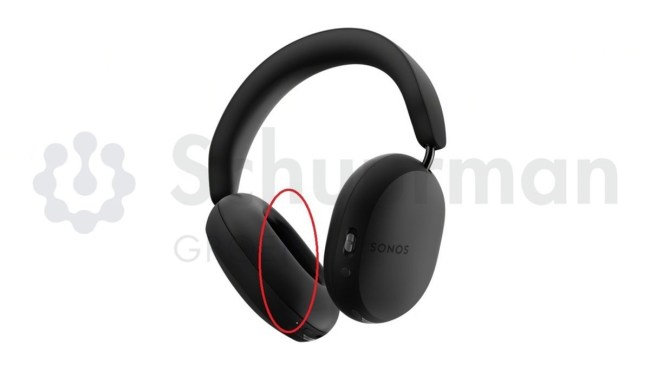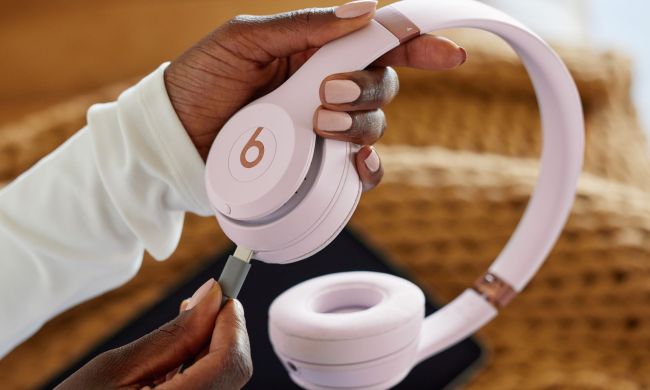
It’s been five years since Master and Dynamic burst onto the headphone scene with its gorgeous and smooth-sounding MH40 over-the-ear cans. To celebrate that milestone, the New York City-based audio company has released a fully wireless version of that iconic first product: the $299 MH40 Wireless.
The MH40 Wireless aren’t just the original MH40s with a Bluetooth chip, though M&D has retained many of the MH40’s most notable features. The retro-aviator look that was so instantly recognizable has been preserved in its entirety, and the same high-quality materials like stainless steel, anodized aluminum, and lambskin are all here too. However, the MH40 Wireless are a lot lighter (276g vs. 360g) despite having an internal battery, and they use a new set of 40mm custom drivers to achieve their sound quality.
The original MH40’s drivers are larger, at 45mm, so we’re curious to see if the smaller speakers have an appreciable effect on the MH40 Wireless’s audio delivery. The new wireless cans are powered by Bluetooth 5.0 and are aptX-compatible when used with devices that support this enhanced Bluetooth codec.

With 18 hours of battery life, the MH40 Wireless should last two hours longer than the company’s similarly priced $299 MW60 model, but substantially shorter than the $499 MW65 flagship that packs a full 24 hours of playtime. M&D claims that you can get up to 50% of that battery life back after 30 minutes of charging.
M&D is touting the MH40 Wireless’ voice capabilities. Thanks to a beamforming, noise reduction dual mic array on the right earcup, the headphones offer “best-in-class” talk performance when on voice calls, and a correspondingly accurate set of interactions with your chosen voice assistant.
One of the more interesting aspects of the MH40 Wireless is its USB-C-to-analog audio cable for use when you don’t want to (or can’t) use Bluetooth. M&D has found a way to use the USB-C port for both charging and analog audio. We’ve seen headphones that use USB-C for audio — just not for powerless analog audio. It’s a clever use of the technology if it works as well as the traditional 3.5mm jack, but travelers, be warned: Finding a replacement USB-C-to-analog cable might prove tricky if you ever misplace this one or leave it at home.

The MH40 Wireless come in three color combos: Gunmetal with black coated canvas, black metal with black coated canvas, and silver metal with brown coated canvas. They come with a canvas carry-bag and both the USB-C-to-analog cable and a USB-C charging cable. They’re available to buy now, but only from masterdynamic.com.



